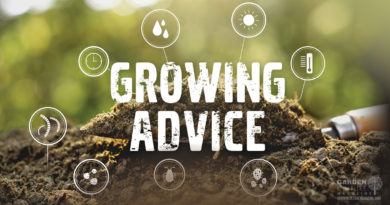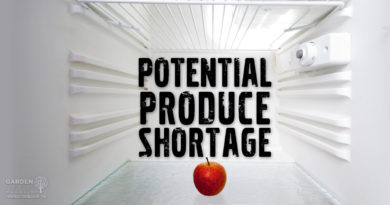How to Create a Bag Garden
To the harvester, nothing is more satisfying or paints a prettier picture than an array of home-grown, fresh garden vegetables on the table. Experiencing everything from beautiful bright red of vine-ripened tomatoes, to deep green, iron-rich spinach leaves, gardening can be a rewarding experience.
Many of us have dreamed of having a vegetable or maybe an herb garden to dabble in and enjoy, but we lack the space or the time that a productive garden requires. With a traditional garden, those are legitimate stumbling blocks, but take heart.
There is a way that we can still be gardeners with a system designed expressly for limited space. Let’s break with tradition and think not only outside the box…but inside the rectangle. I’m talking about a bag garden. If you’ve never heard of one, you’re in for a treat.
Email Newsletter
Join thousands of other growers who are already receiving our monthly newsletter.
Read also: Why More Growers are Switching to Fabric Pots
Whether you’d like to grow a few vegetables, herbs, spices or maybe just some pretty flowers, a bag garden is a simple, yet brilliant way to do that. There are resources available on how and when to plant every kind of vegetable, spice and flower imaginable, so I won’t get into planting specifics.
My intent here is only to make you aware of the concept of bag gardening, because if you have only enough space for a bag or two of soil, you can still have a nice little garden that is beautiful, productive and low maintenance.
Getting Started with a Bag Garden
Begin with the purchase of a few bags of ordinary top soil. Most top soils are essentially the same—soil and organic compost consisting of wood chips and decayed leaves—so there’s no need to go out and buy an expensive brand.
In a nutshell, you want the soil to be fluffy yet have some grit to it. The small roots of the plants need the course soil to gain a foothold. You can find a variety of soils at your favorite garden center or hardware store.
Place your unopened bag(s) of top soil horizontally (flat) on the spot you wish to begin your garden. This is of course in accordance with the proper sunlight to shade ratio required for your specific garden plants.
Read also: A Crash Course in Container Gardening
With a razor knife or other sharp instrument, begin about 2 in. from the top of the bag and cut out the center as if you were cutting out a picture from its frame, leaving about a 2-in. border.
Remove the center. Your soil is now framed and almost ready for planting. Now, with a piece of wire (I use a coat hanger) or whatever’s handy, poke several holes in the bottom of the bag for drainage.
If using more than one bag, place the cut-out center of the bag between them, thus keeping weeds or grass from growing up there. The edges of the bags will hold the plastic down. From there, you simply follow the instructions for the planting and care of whatever it is you’ve chosen to grow in your new, nutrient-rich garden bed.
Don’t Forget the Water
I want to touch for a moment on watering your plants. Not so much the how and when to water (as those can be plant specific), but the type of water you should use because many gardeners prefer an organic-type garden and watering with ordinary faucet or tap water can introduce a host of harmful chemicals like fluoride and chlorine than can be unhealthy and even harmful to your plants.
Two houseplants which come to mind that can’t handle these chemicals are the spider plant and dracaena. Both of these indoor plants can be injured by the fluoride contained in tap water.
Alkaline water is best to use on these, but be sure to check the specific water requirements for other plants you are considering growing. High degrees of chlorine in tap water can cause leaf-burn to your plants as well.
Read also: Watering Your Soil Garden Successfully
Additionally, some organic gardeners are concerned about transferring the chemicals found in tap water to the vegetables being grown and take pains to ensure good, chemical-free water is introduced.
The beauty of the bag garden is the ease with which this can be done. The bottom of the bag keeps cut worms and other insects from eating the roots of your plants, and weeding is virtually eliminated as well.
A bag or two requires only a little time each week to maintain. Growing flowers, veggies or herbs, has never been easier. With a little luck, you’ll soon be the envy of the neighborhood and of gardeners everywhere. So, if you’d love to have a garden but believe you may not have the room, don’t worry, it’s in the bag.




